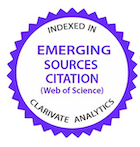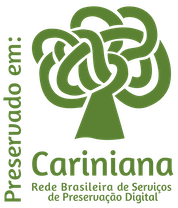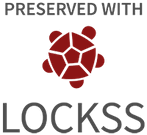Breed and carcass characteristics on bruises and meat ph in beef of steers and culling cows
DOI:
https://doi.org/10.1590/1089-6891v18e-45295Palavras-chave:
Animal Welfare, Carcass Classification, Meat QualityResumo
This study aimed to evaluate genetic group, maturity, and fatness score of cattle on bruises and final pH value of the carcass of steers and cows. The number of bruises and the final pH value of the carcasses were evaluated as response variables as a function of: genetic group; physiological maturity and fatness score. Increases of 174.6 and 159.4% were found when maturity evolved from deciduous to eight teeth for males and females, respectively. Only in males did the carcasses with moderate fat show a higher number (P<0.05) of bruises than scarce-fat carcasses. Bruises increased by 37.93 and 23.52% for the zebu animals compared with taurine cattle, for males and females, respectively. As regards the pH values, there were variations between sexes, with females having, on average, higher pH, which differed between the zebu and the taurine. Two-teethed males displayed higher pH values, while as four and six-teethed females were higher to the others (P<0.05). Bruises losses in bovine carcass are influenced by physiological maturity, fatness score, and genetic group, with older animals being more susceptible to bruises; in zebu animals. Females are more susceptible to final pH alterations carcass, mainly in the carcasses of zebu animals.
Downloads
Downloads
Publicado
Como Citar
Edição
Seção
Licença
Copyright (c) 2017 Ciência Animal Brasileira

Este trabalho está licenciado sob uma licença Creative Commons Attribution 4.0 International License.
Autores que publicam nesta revista concordam com os seguintes termos:
- Autores mantém os direitos autorais e concedem à revista o direito de primeira publicação, com o trabalho simultaneamente licenciado sob a Licença Creative Commons Attribution que permite o compartilhamento do trabalho com reconhecimento da autoria e publicação inicial nesta revista.
- Autores têm autorização para assumir contratos adicionais separadamente, para distribuição não-exclusiva da versão do trabalho publicada nesta revista (ex.: publicar em repositório institucional ou como capítulo de livro), com reconhecimento de autoria e publicação inicial nesta revista.
- Autores têm permissão e são estimulados a publicar e distribuir seu trabalho online (ex.: em repositórios institucionais ou na sua página pessoal) a qualquer ponto antes ou durante o processo editorial, já que isso pode gerar alterações produtivas, bem como aumentar o impacto e a citação do trabalho publicado (Veja O Efeito do Acesso Livre).






























